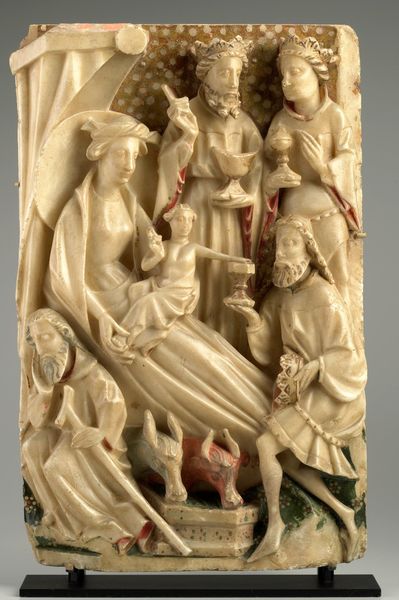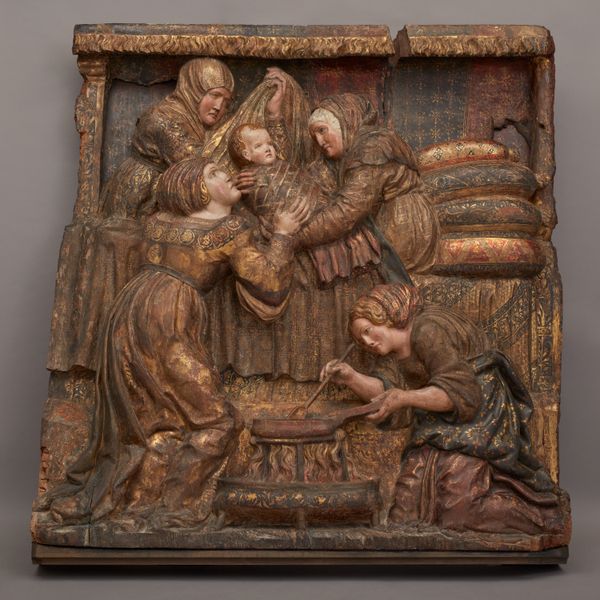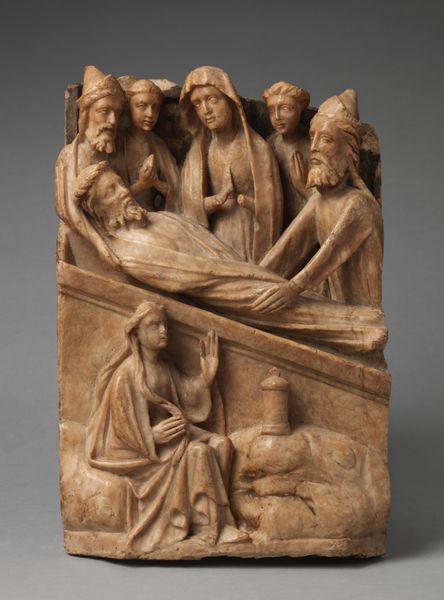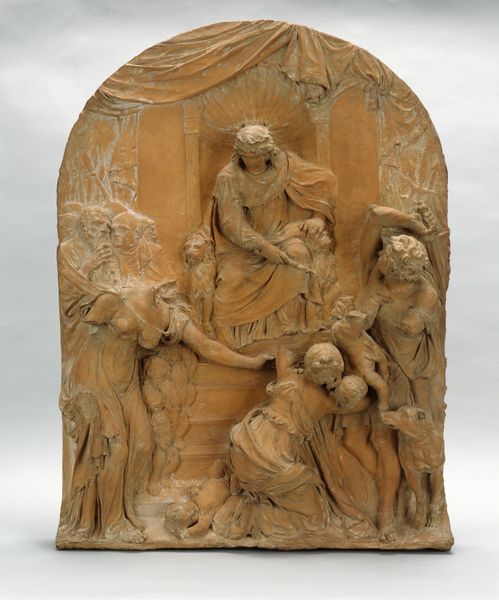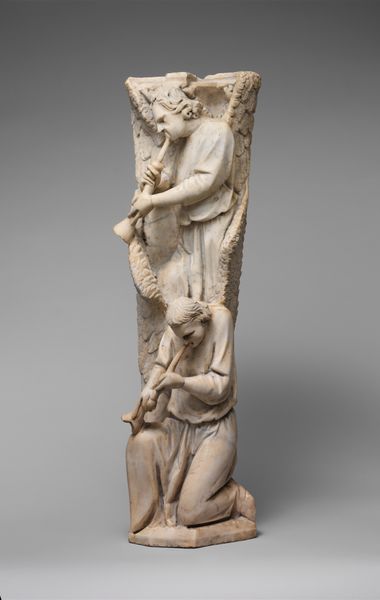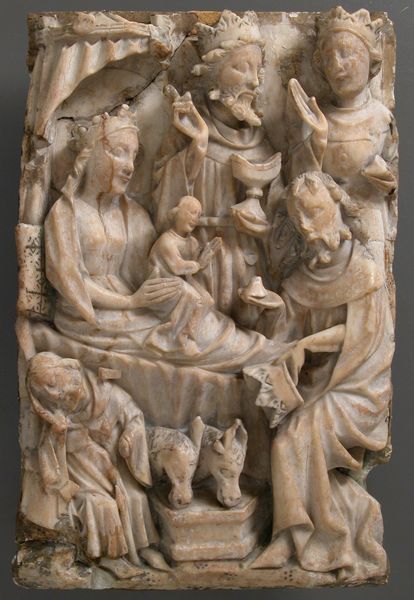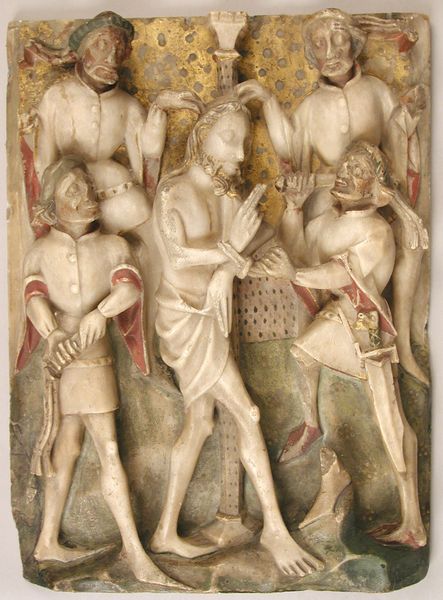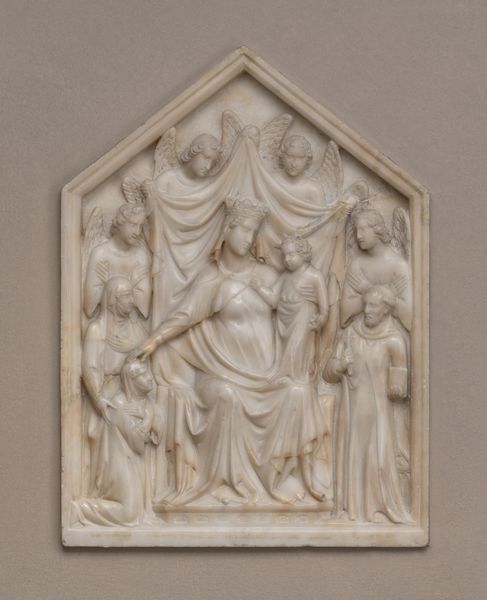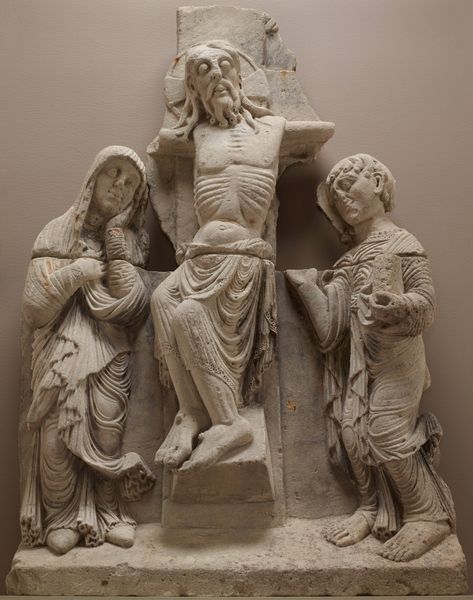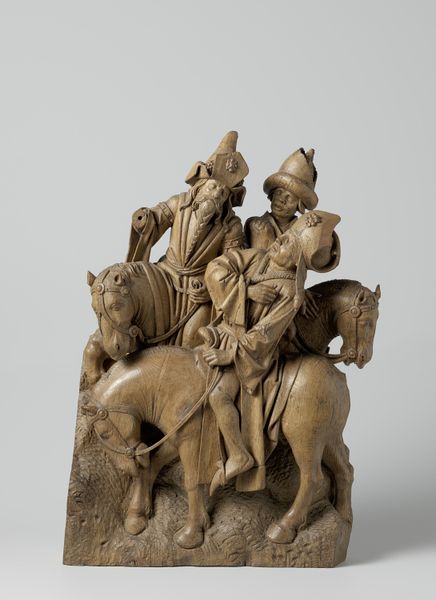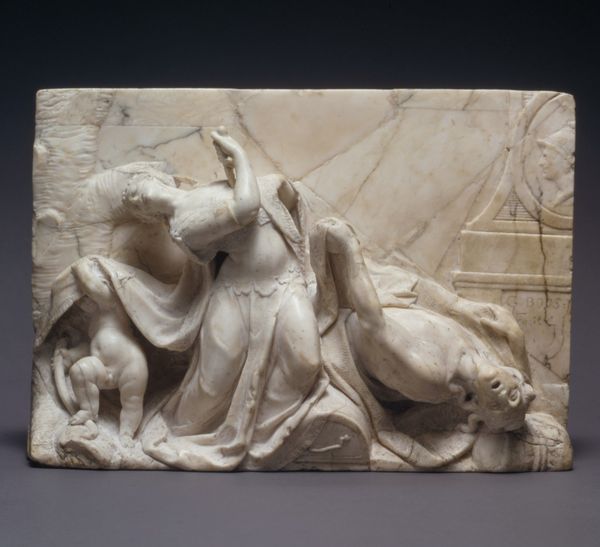
carving, sculpture, marble
#
medieval
#
carving
#
stone
#
sculpture
#
sculptural image
#
figuration
#
soldier
#
sculpture
#
men
#
history-painting
#
marble
#
medieval-art
#
christ
Dimensions: Overall: 14 3/4 x 11 1/4 x 1 3/4 in. (37.5 x 28.6 x 4.4 cm); 15.4 lbs (7 kg)
Copyright: Public Domain
Editor: This is "The Betrayal of Christ," a 15th-century marble carving, believed to be from the School of Nottingham, here at the Met. It's pretty intense – all these figures crowded together, and the fallen soldier at the bottom… It feels dramatic and chaotic. What stands out to you most when you look at this piece? Curator: Well, it certainly is a dramatic piece. What strikes me is how tactile it feels, even though it's stone. Imagine the hands that chipped away, layer by layer, to reveal this pivotal moment. The figures are almost bursting from the frame. Look at Judas embracing Christ—a kiss that seals his fate. You can almost feel the tension, the conflicting emotions etched into their faces. Do you notice how some figures appear more agitated than others? Editor: I see what you mean. Some are definitely more expressive! But is it typical for medieval art to be so… emotionally charged? I thought it was mostly about symbolism. Curator: Ah, good question. While symbolism is indeed key in medieval art, the human element shouldn't be overlooked. Here, the sculptor attempts to capture the raw human drama inherent in the betrayal narrative. Also, consider that carvings like these often adorned religious spaces, meant to evoke emotional responses in viewers. It's meant to bring the biblical story to life, right before their very eyes, so that worshippers felt closer to these important religious stories. Editor: So, it's both a symbolic representation and an attempt to capture real human emotion? That's fascinating! I guess I was seeing it a bit too one-dimensionally. Curator: Precisely! It’s in that tension between symbolism and humanism that much of the art from this period finds its power. Food for thought, eh? Editor: Definitely. I'm going to look at all medieval sculpture differently now.
Comments
No comments
Be the first to comment and join the conversation on the ultimate creative platform.
